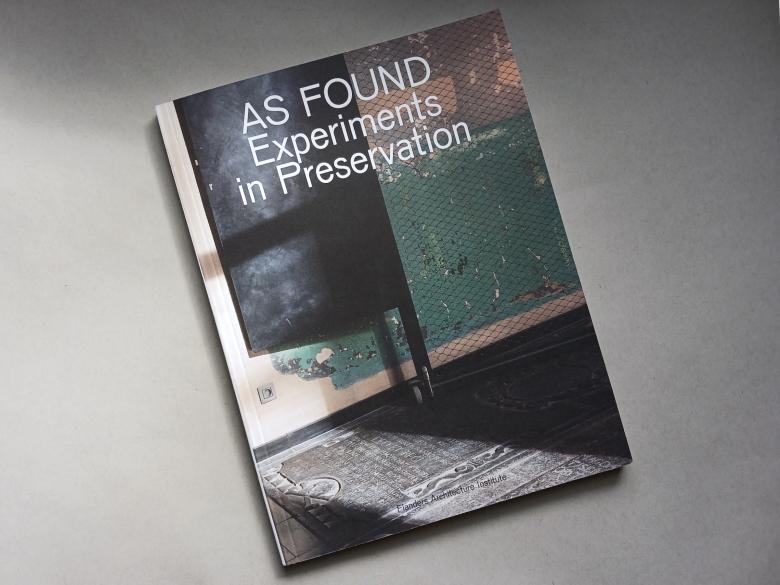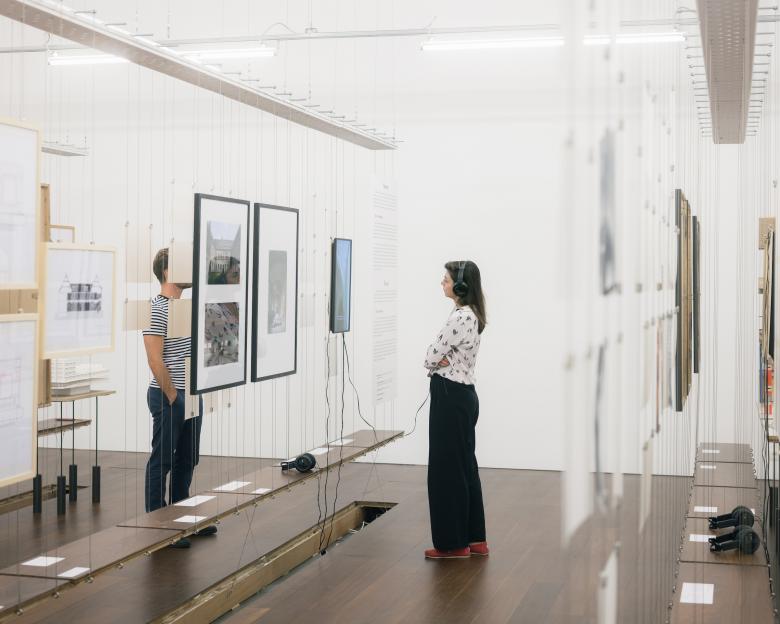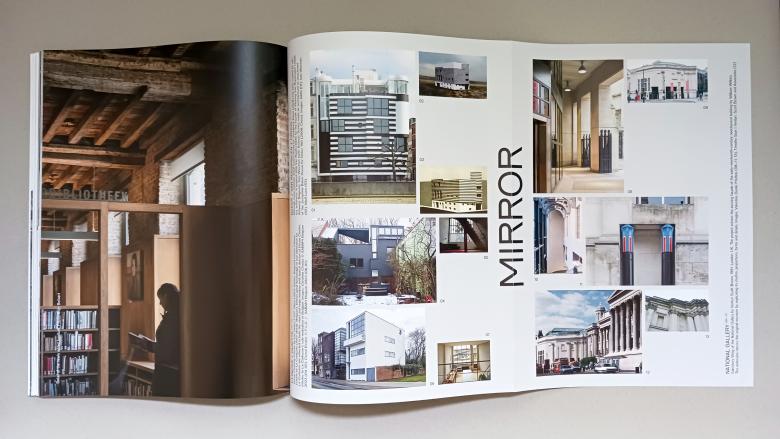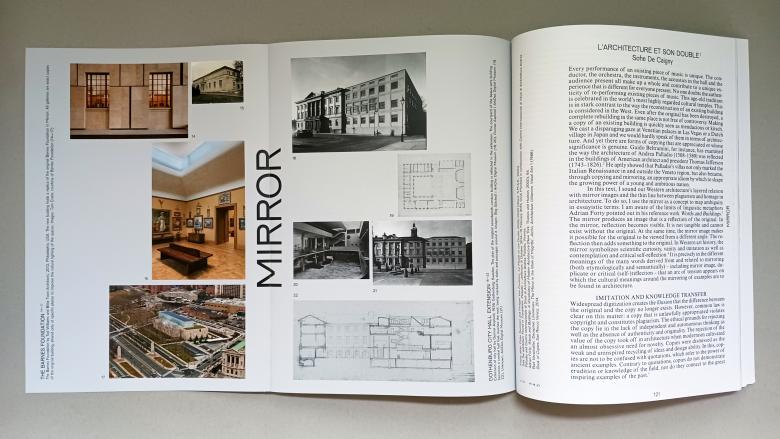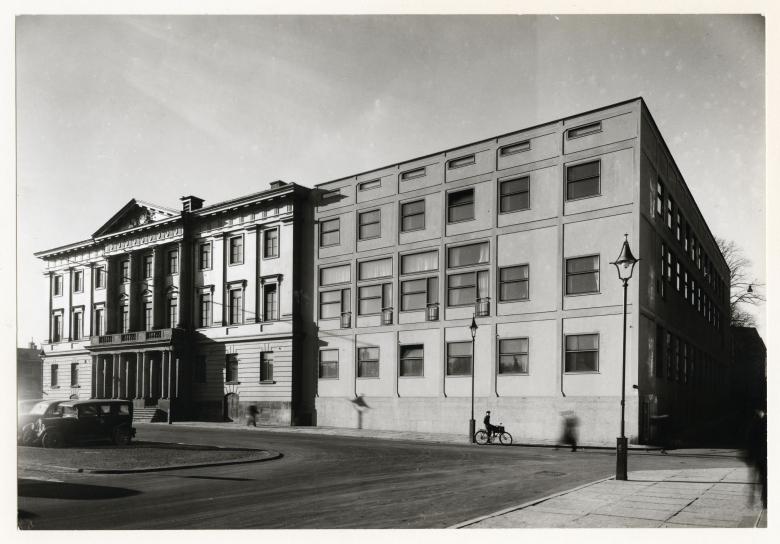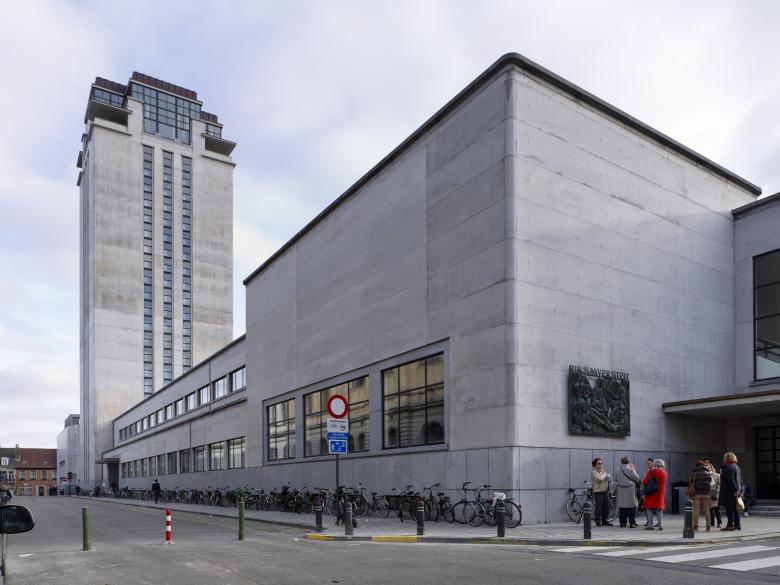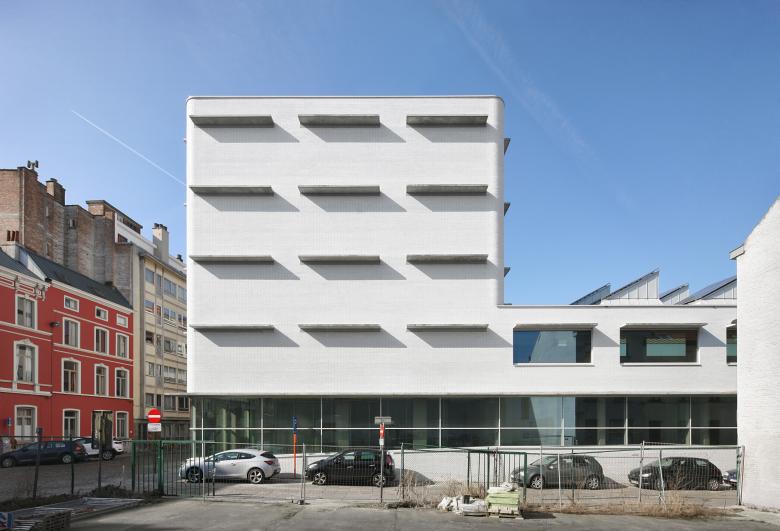A new exhibition and companion book draws attention to experimental approaches in intervening in existing buildings and spaces by architects from Flanders and Brussels. World-Architects looks in the pages of As Found: Experiments in Preservation to see what lessons it offers architects beyond Flanders.
Near the end of the 1960s, as part of the Robin Hood Gardens housing project, Alison and Peter Smithson created Art of the “As Found,” a mural made with shards of china and other debris found on the construction site by the couple's son, Simon. The pieces of detritus were formed into 54 concrete tiles that were then set into a wood-box shutter on a wall of the building's Old People's Club Room.
Writing about the “as found” aesthetic decades later, in a book about The Independent Group, the Smithsons recounted: “Setting ourselves the task of rethinking architecture in the early 1950s, we meant by the ‘as found’ not only adjacent buildings but all those marks that constitute remembrancers in a place and that are to be read through finding out how the existing built fabric of the place had come to be as it was.” They contended that mature trees on a site might indicate a building's shape, but the “as found” could be ordinary, prosaic things, in which “you reached for what was there” or you “were concerned with the seeing of materials for what they were.”
The “as found” phrase, attributed to the Smithsons but also involving colleagues of theirs in The Independent Group, including Nigel Henderson and Eduardo Paolozzi, finds a new relevance — nay, urgency — in today's era of multiple converging crises, as evidenced by the As Found exhibition organized by the Flanders Architecture Institute (VAi) and De Singel, on display at De Singel in Antwerp until March 2024. “Using experimental, groundbreaking, (inter)national examples,” per the description on the VAi website, “the exhibition explores the different positions that contemporary designers adopt in relation to existing buildings.”
World-Architects has not (yet) seen the exhibition in person, so this review focuses on the companion publication, As Found: Experiments in Preservation, edited by the exhibition's curators: Sofie De Caigny, Hülya Ertas, and Bie Plevoets. Nonetheless, photographs of the exhibition in the expo hall at De Singel express a scenographic synergy with the exhibition's theme of working with existing building: FELT architecture & design took such “as found” elements as the suspended ceiling panels and wood floor boards to structure the aisles for the exhibition and suspend the photographs, drawings, headphones, and other components.
Like the exhibition, the book focuses on seven “experiments in preservation,” each one carrying a spatial theme — ensemble, void, reconfiguration, inside out, traces, mirror, and nuance — and each one described through images of international precedents, a short essay by a critic, and a case study on a project in Flanders. Gatefolds with the international precedents (spreads below) lend some structure to the 174-page paperback and make it easy to flip through the book and find the different thematic sections.
Following the seven thematic sections is a transcript of a roundtable discussion between the editors of the book and five “actors engaged in the field of preservation”: Stefan Devoldere, William Mann, Leen Meganck, Michiel Van Balen, and Caroline Voet. They touch on shifting attitudes toward heritage, the relationships between function and form, new typologies arising from social changes, and other concerns aligned with the “as found.”
In addition to clearly referencing the “as found” notion of the Smithsons, the curators/editors explicitly cite Experimental Preservation, the 2016 book edited Jorge Otero-Pailos, Erik Langdalen, and Thordis Arrhenius as an inspiration, specifically in regards to the development of the seven themes. The earlier book is structured as roundtable discussions interspersed with a wide array of examples of experimental preservation, from David Gissen's proposal to recreate the earthen mound that was used to fell the Place Vendôme Column in 1871 to Otero-Pailos's own The Ethics of Dust series of artworks.
While the case studies in As Found are not as broad as the examples in Experimental Preservation, the approaches to preservation, conservation, heritage, and other aspects of dealing with existing buildings in the book are nevertheless diverse. For example, the Open Air Storage of the Antwerp Public Art Collection finds Brussels architect Ash Çiçek experimenting with reconfiguration: reusing concrete pedestals on the site of Middelheim Museum in which “new configurations were formed, creating fresh relations between the sculptures themselves and between the sculptures and viewers,” as described by Bie Plevoets.
Another case study — a two-in-one instance — is illustrated here: Boekentoren and State Archives in Ghent, both designed by Robbrecht en Daem Architecten, are examples of mirror. Precedents for this approach include, among others, Venturi, Scott Brown and Associates' Sainsbury Wing (1991) at the National Gallery in London; The Barnes Foundation in Philadelphia, which was moved in 2012 from the residence of Albert C. Barnes to replica rooms in a building designed by Tod Williams Billie Tsien Architects; and Gunnar Asplund's modern mirror of the Beaux-Arts city hall in Gothenburg, Sweden, completed in 1936 (pictured above).
Paul Robbrecht and Hilde Daem's two otherwise unrelated buildings in Ghent are not overt mirrors — unlike, say, Morris Adjmi's The Sterling Mason, a GFRC mirror image of a brick loft in New York's Tribeca neighborhood — but the conservation of Henry van de Velde's Boekentoren (Book Tower) at Ghent University inspired the architects with the State Archives, whose commission came after the start of Boekentoren but was completed first. Located in the city center, the volume for the State Archives “is meticulously matched to the scale of the surrounding buildings,” in the architects' words.
Sofie De Caigny, writing in As Found, draws attention to “several fascinating reflections” between the two projects, including “the elegant, rounded corners” from van de Velde's 1930s complex appearing in Robbrecht en Daem's State Archives building. “The mirror image highlights a special piece of the city's architectural history,” De Caigny concludes, “creating an architectural-historical dialogue between two buildings that lie just a stone's throw from each other.”
With just seven Flemish projects, each one documented across a dozen pages, the value of As Found is not as a sourcebook of case studies: it is in the seven experimental architectural positions that can be used by architects to determine how they respond to existing conditions. A project need not have a heritage component for new buildings or interventions to find inspiration; like the Smithsons, the “ordinary, prosaic things” in cities and other contexts can be sources of creativity.
With 2030 — long an important deadline in the goal of achieving carbon neutrality — drawing near, and with global emissions continuing to increase outside of the brief hiccup in 2020 that was the pandemic, the need to care for, conserve, and reuse existing buildings is paramount. Taking an “as found” approach, combined with such starting points as reconfiguration and mirror, architects can imbue renovations, adaptive reuse, and other projects eschewing demolition with design qualities on par or exceeding those in the pages of As Found.
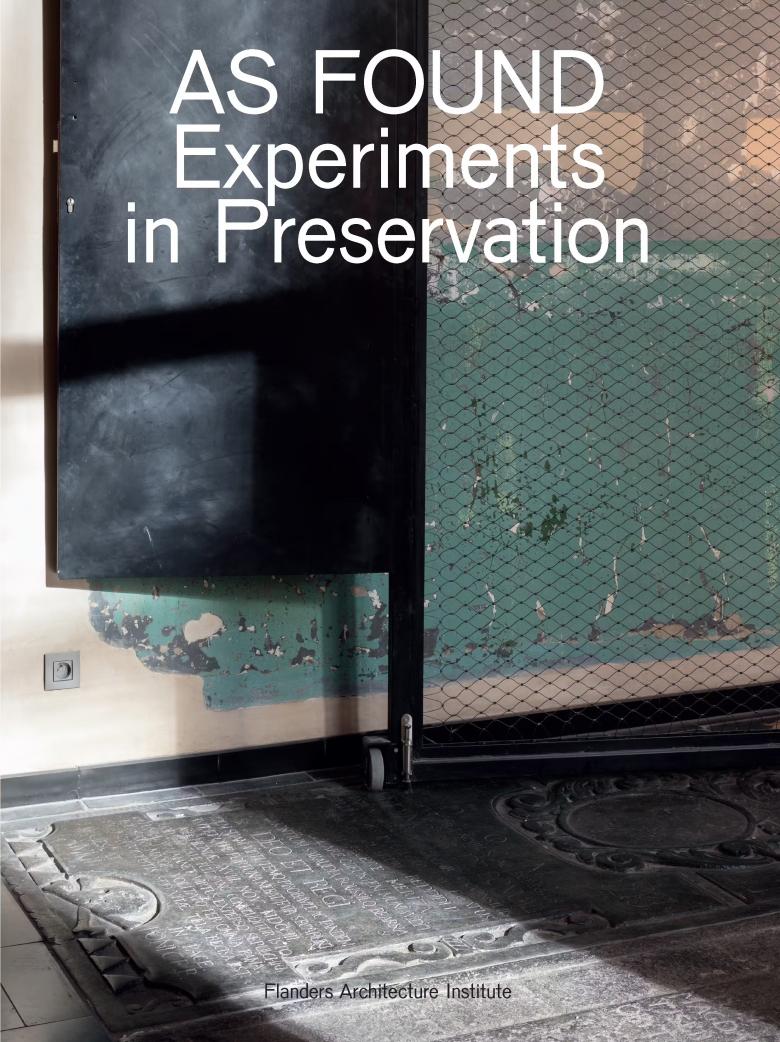
As Found: Experiments in Preservation
Edited by Sofie De Caigny, Hülya Ertas, Bie Plevoets
Contributions by Stefan Devoldere, Christoph Grafe, Jonathan Hill, William Mann, Leen Meganck, Sally Stone, Michiel Van Balen, Koenraad Van Cleempoel, Caroline Voet
280 x 210 mm
174 Pages
Paperback
ISBN 9789492567321
Flanders Architecture Institute
Purchase this book
